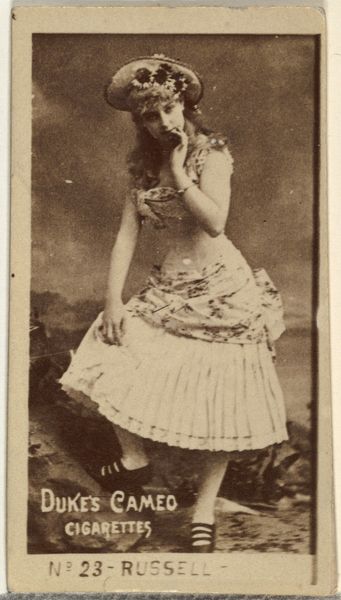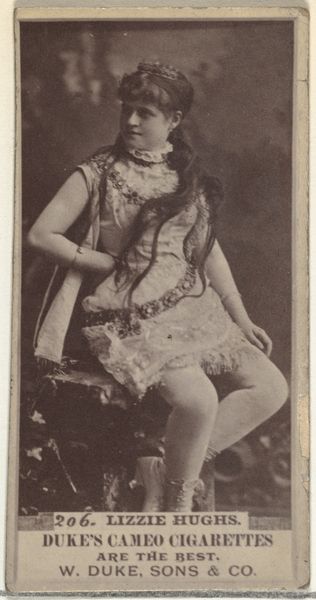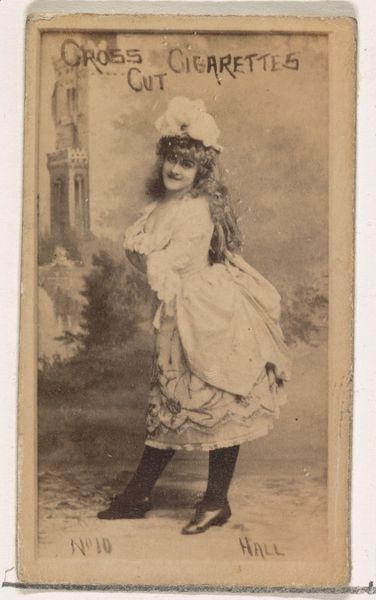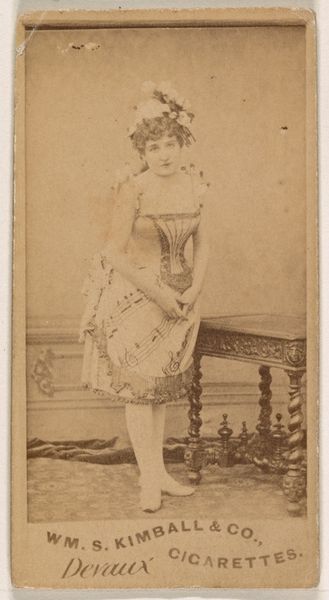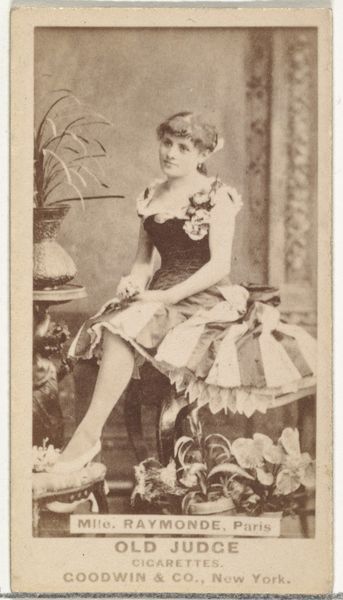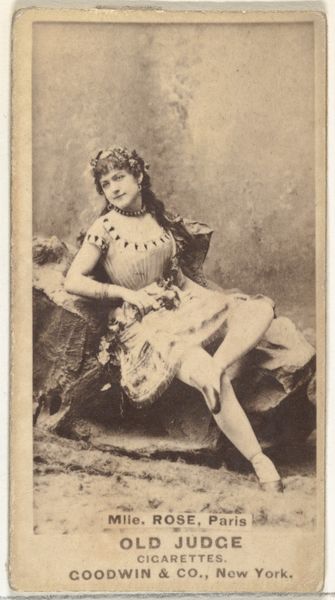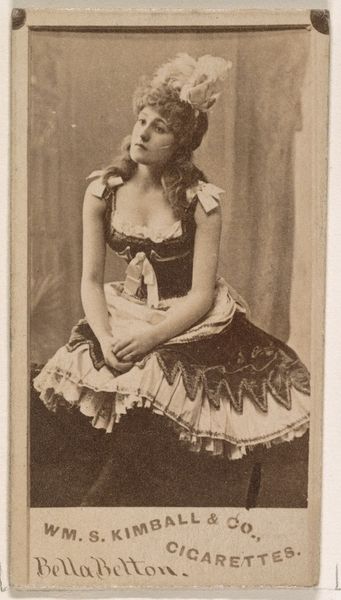
Card Number 115, Lillian Russell, from the Actors and Actresses series (N145-2) issued by Duke Sons & Co. to promote Cross Cut Cigarettes 1880s
0:00
0:00
drawing, print
#
portrait
#
pencil drawn
#
drawing
#
toned paper
# print
#
charcoal drawing
#
charcoal art
#
pencil drawing
#
coffee painting
#
19th century
#
men
#
watercolour illustration
#
charcoal
#
watercolor
Dimensions: Sheet: 2 5/8 × 1 7/16 in. (6.6 × 3.7 cm)
Copyright: Public Domain
Editor: Here we have "Card Number 115, Lillian Russell" from the Actors and Actresses series, created in the 1880s by W. Duke, Sons & Co. as a promotional item for Cross Cut Cigarettes. It's currently housed at the Metropolitan Museum of Art. It's…interesting, how an image of a celebrated actress was used to sell tobacco products. What can you tell me about the cultural significance of this card? Curator: This piece reflects the late 19th-century's burgeoning celebrity culture and the strategies used to market consumer goods. Think about the rise of mass media; suddenly, images of actors and actresses became widely accessible. Companies like Duke Sons & Co. cleverly tapped into this, associating their product, cigarettes, with glamour and the aspirational lifestyle represented by figures like Lillian Russell. Editor: So, the card itself becomes a vehicle for conveying social status? Curator: Precisely. The card wasn't just about selling cigarettes. It subtly implied that smoking Cross Cut Cigarettes was a way to connect with, or even emulate, the elegance and sophistication of stage stars. Do you think this approach had any impact on who was buying them? Editor: It definitely seems geared toward a specific demographic, perhaps those aspiring to a more refined lifestyle. It’s a calculated way to shape the perception of the product, and of smoking in general, as something glamorous and desirable. Curator: Absolutely. And we also see how advertising reinforces social hierarchies by subtly defining who belongs to a particular social stratum. This one little card carries significant cultural weight when we consider its purpose and target audience within its historical context. Editor: This really highlights how something as simple as a cigarette card can be a fascinating window into the social and cultural dynamics of its time. It shows how the marketing industry has worked, for a long time, with very intentional decisions behind what is seen in the world. Curator: Exactly. Looking closely at these seemingly insignificant artifacts reveals so much about how institutions, social desires, and even political messaging get disseminated to a wide audience.
Comments
No comments
Be the first to comment and join the conversation on the ultimate creative platform.

